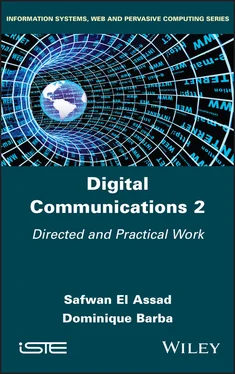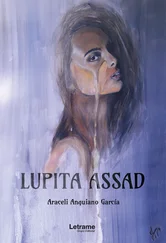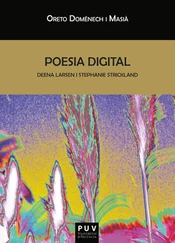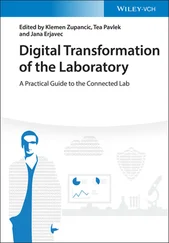1 Cover
2 Title page
3 Copyright First published 2020 in Great Britain and the United States by ISTE Ltd and John Wiley & Sons, Inc. Apart from any fair dealing for the purposes of research or private study, or criticism or review, as permitted under the Copyright, Designs and Patents Act 1988, this publication may only be reproduced, stored or transmitted, in any form or by any means, with the prior permission in writing of the publishers, or in the case of reprographic reproduction in accordance with the terms and licenses issued by the CLA. Enquiries concerning reproduction outside these terms should be sent to the publishers at the undermentioned address: ISTE Ltd 27-37 St George’s Road London SW19 4EU UK www.iste.co.uk John Wiley & Sons, Inc. 111 River Street Hoboken, NJ 07030 USA www.wiley.com © ISTE Ltd 2020 The rights of Safwan El Assad and Dominique Barba to be identified as the authors of this work have been asserted by them in accordance with the Copyright, Designs and Patents Act 1988. Library of Congress Control Number: 2020940940 British Library Cataloguing-in-Publication Data A CIP record for this book is available from the British Library ISBN 978-1-78630-542-8
4 Foreword
5 PART 1: Tutorials 1 Theory of Information: Problems 1 to 151.1. Problem 1 – Entropy 1.2. Problem 2 – K-order extension of a transmission channel 1.3. Problem 3 – Compressed speech digital transmission and Huffman coding 1.4. Problem 4 – Coding without and with information compression 1.5. Problem 5 – Digital transmission of a TV signal (luminance component only) with information compression and Huffman coding 1.6. Problem 6 – Information, entropy, codes (1) 1.7. Problem 7 – Information, entropy, codes (2) 1.8. Problem 8 – Coding and transmission of a television-type information source 1.9. Problem 9 – Entropy and motion information encoding of multimedia source 1.10. Problem 10 – Hamming coding 1.11. Problem 11 – Cyclic coding (1) 1.12. Problem 12 – Cyclic coding (2) 1.13. Problem 13 – Cyclic coding and Hamming coding (1) 1.14. Problem 14 – Cyclic coding and Hamming coding (2) 1.15. Problem 15 – Cyclic code, M-sequences, and Gold sequences 2 Baseband Digital Transmission: Problems 16 to 262.1. Problem 16 – Entropy and information to signal source coding 2.2. Problem 17 – Calculation of autocorrelation function and power spectral density by probabilistic approach of RZ and NRZ binary on-line codes 2.3. Problem 18 – Calculation of the autocorrelation function and the power spectral density by probabilistic approach of the bipolar RZ code 2.4. Problem 19 – Transmission using a partial response linear coding 2.5. Problem 20 – Signal information coding and digital transmissions with partial response linear encoder 2.6. Problem 21 – Baseband digital transmission system (1) 2.7. Problem 22 – Baseband digital transmission (2) 2.8. Problem 23 – M-ary digital baseband transmission 2.9. Problem 24 – Baseband digital transmission of bipolar coded information 2.10. Problem 25 – Baseband transmission and reception using a partial response linear coding (1) 2.11. Problem 26 – Baseband transmission and reception using a partial response linear coding (2) 3 Digital Transmissions with Carrier Modulation: Problems 27 to 333.1. Problem 27 – Digital transmissions with carrier modulation 3.2. Problem 28 – 4-QAM digital modulation transmission (1) 3.3. Problem 29 – Digital transmissions with 2-ASK modulation 3.4. Problem 30 – 4-QAM digital modulation transmission (2) 3.5. Problem 31 – Digital transmissions with 4-QAM digital modulation: case of single and double paths propagation 3.6. Problem 32 – Performance of digital modulations and 16-QAM digital modulation 3.7. Problem 33 – QAM encoding and transmission of motion information of digital video
6 PART 2: Practical Works 4 Study of the Transmission of Digital Information on Two-wire Cables4.1. Introduction 4.2. Recall of essential results on transmission line theory 4.3. Practical study 4.4. Objectives 4.5. Measurement of the characteristic impedance Zc by a reflectometry method (Time Domain Reflectometry: TDR) 4.6. Measurement of attenuation α as a function of frequency 4.7. Variation of the attenuation α as a function of length 4.8. Measurement of the bitrate D (bit/s) 5 Study of Baseband Digital Transmission Systems for the Transmission of Analog Signals (Transmitter and Receiver)5.1. Objectives 5.2. First part – Study of a pulse amplitude modulation and time division multiplex signal transmission system 5.3. Second part – Study of a pulse code modulation (PCM) signal transmission system and transmission error control (error detector code and error corrector code) 6 Study of On-line Codes for Baseband Modulation and Carrier Modulation6.1. Objectives 6.2. Description of the electronic boards 6.3. First part – Study of on-line codes for baseband digital transmission 6.4. Second part – Study of digital modulations with carrier 7 Study of a QPSK Modem Under MATLAB, Simulink, Communications and DSP7.1. Objective 7.2. Required work 7.3. Appendix: Diagrams of the QPSK modem and its different blocks 8 Study of a Coding and Decoding System by Cyclic Codes8.1. Objective 8.2. Recall of the principles of cyclic coding and decoding 8.3. Coding by division: systematic code 8.4. Decoding by division: principle of calculating the syndrome 8.5. Required work 8.6. Appendix: Block diagrams
7 References
8 Index
9 End User License Agreement
1 Cover
2 Table of Contents
3 Title page
4 Copyright First published 2020 in Great Britain and the United States by ISTE Ltd and John Wiley & Sons, Inc. Apart from any fair dealing for the purposes of research or private study, or criticism or review, as permitted under the Copyright, Designs and Patents Act 1988, this publication may only be reproduced, stored or transmitted, in any form or by any means, with the prior permission in writing of the publishers, or in the case of reprographic reproduction in accordance with the terms and licenses issued by the CLA. Enquiries concerning reproduction outside these terms should be sent to the publishers at the undermentioned address: ISTE Ltd 27-37 St George’s Road London SW19 4EU UK www.iste.co.uk John Wiley & Sons, Inc. 111 River Street Hoboken, NJ 07030 USA www.wiley.com © ISTE Ltd 2020 The rights of Safwan El Assad and Dominique Barba to be identified as the authors of this work have been asserted by them in accordance with the Copyright, Designs and Patents Act 1988. Library of Congress Control Number: 2020940940 British Library Cataloguing-in-Publication Data A CIP record for this book is available from the British Library ISBN 978-1-78630-542-8
5 Foreword
6 Begin Reading
7 References
8 Index
9 End User License Agreement
1 Chapter 1 Figure 1.1. Basic diagram of a digital communication Figure 1.2.Basic block diagram of a digital communication of a memoryless infor... Figure 1.3. Block diagram of a digital transmission system for analog signal Figure 1.4.General scheme of a digital transmission of a TV signal with inform... Figure 1.5. Information compression using a DPCM system and a Huffman code C 4 Figure 1.6. Probability law Pr(U) of TV frames grey levels U Figure 1.7. Block diagram of Hamming coder C (7, 4) Figure 1.8. Block diagram of Hamming decoder C (7, 4) Figure 1.9. Implementation scheme of the encoder Figure 1.10. Implementation scheme of the decoder Figure 1.11.Implementation scheme of the coder based on a linear feedback shift... Figure 1.12.Implementation scheme of the decoder based on a linear feedback shi... Figure 1.13. Pseudo-random number generator and register states Figure 1.14.Structure of the decoder for the detection of errors. For a color ... Figure 1.15. Implementation scheme of the pre-multiplied coder Figure 1.16. Implementation scheme of the pseudo-random number generator (PRNG) Figure 1.17.Implementation scheme of the coder. For a color version of this fig... Figure 1.18.Implementation scheme of the decoder. For a color version of this f... Figure 1.19.Implementation scheme of the pseudo-random number generator based ... Figure 1.20. Implementation scheme of the Gold generator
Читать дальше












